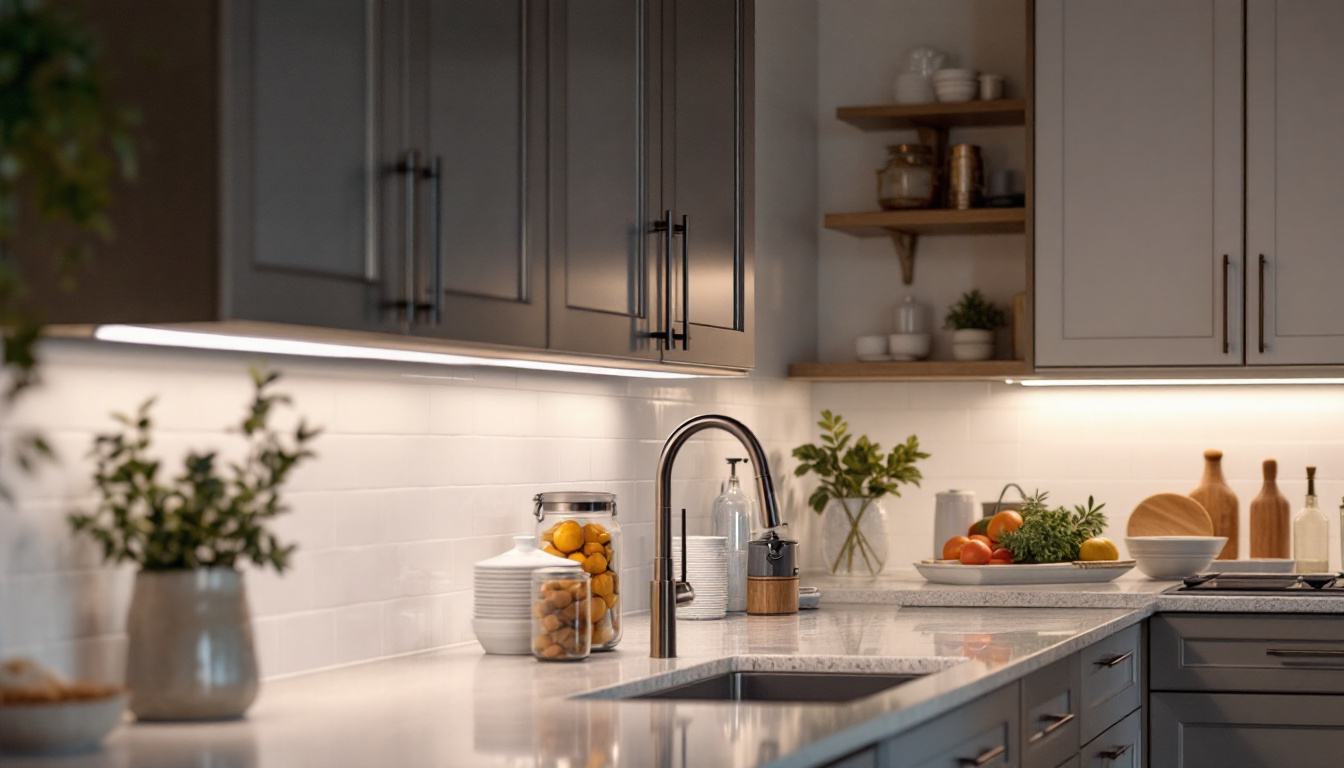
Fluorescent lighting has long been a staple in the industry, providing efficient illumination for various applications. However, the size of fluorescent tubes can significantly impact their effectiveness, installation, and overall performance. For lighting contractors, understanding the pros and cons of different fluorescent sizes is crucial for making informed decisions that will meet client needs and project specifications. This article delves into the various sizes of fluorescent tubes, exploring their advantages and disadvantages while providing insights for lighting contractors.
Fluorescent tubes come in various sizes, with the most common being T5, T8, and T12. The “T” stands for tubular, and the number that follows indicates the diameter of the tube in eighths of an inch. For instance, a T8 tube has a diameter of 1 inch (8 eighths), while a T5 tube measures 5/8 of an inch in diameter. Each size has its unique characteristics, making them suitable for different applications.
T5 fluorescent tubes are among the most compact options available. Their smaller size allows for more flexible installation in tight spaces, making them ideal for applications such as under-cabinet lighting and display cases. Additionally, T5 tubes typically offer higher lumen output per watt compared to their larger counterparts, resulting in improved energy efficiency.
However, the compact size of T5 tubes can also present challenges. They may require specialized fixtures, which can increase installation costs. Furthermore, T5 tubes are often more expensive than T8 and T12 options, which may deter some contractors from recommending them to clients looking for budget-friendly solutions. Despite these challenges, T5 tubes are increasingly popular in modern lighting designs, particularly in environments where aesthetics and energy efficiency are paramount. Their sleek appearance and bright output make them a favored choice in retail spaces and galleries, where lighting plays a crucial role in showcasing products and artwork.
T8 fluorescent tubes are the most widely used size in commercial and residential applications. Their 1-inch diameter strikes a balance between efficiency and versatility. T8 tubes are available in a variety of color temperatures and lumen outputs, making them suitable for a wide range of lighting needs.
One of the significant advantages of T8 tubes is their compatibility with existing T12 fixtures, especially when retrofitting is required. This compatibility can save contractors time and money during installations. However, while T8 tubes are more energy-efficient than T12, they may not provide the same level of efficiency as T5 tubes, which can be a consideration for contractors focused on energy savings. Additionally, T8 tubes have become a popular choice for office environments, where they provide a comfortable and bright workspace without causing eye strain. Their availability in various color temperatures allows for customization, enabling businesses to create the desired ambiance while maintaining productivity.
T12 fluorescent tubes are the oldest and least efficient option available. With a diameter of 1.5 inches, they are bulkier than T5 and T8 tubes. While T12 tubes are still found in older buildings, many contractors are moving away from them due to their lower energy efficiency and higher operating costs.
Despite their drawbacks, T12 tubes have some advantages. They are often more affordable upfront and can be easier to source for retrofitting older fixtures. However, the long-term costs associated with energy consumption and maintenance can outweigh these initial savings, making them less appealing for modern projects. Interestingly, T12 tubes are sometimes favored in specific industrial applications where high light output is essential, and energy efficiency is less of a concern. In such settings, the robust construction of T12 tubes can withstand harsher conditions, making them suitable for warehouses and manufacturing facilities. As the industry shifts towards more sustainable options, many businesses are now exploring the feasibility of transitioning from T12 to more efficient lighting solutions, recognizing the long-term benefits of energy savings and reduced environmental impact.
When considering the various fluorescent sizes, it’s essential for lighting contractors to weigh the pros and cons of each option. This evaluation can help determine which size is best suited for specific projects and client needs.
One of the primary advantages of T5 tubes is their energy efficiency. They typically provide more lumens per watt than T8 and T12 tubes, leading to reduced energy costs over time. This efficiency can be a significant selling point for clients looking to lower their utility bills.
Additionally, T5 tubes have a longer lifespan, often lasting up to 30,000 hours. This longevity means less frequent replacements, which can save contractors time and clients money in the long run. Their compact size also allows for creative lighting designs, making them an attractive option for various applications.
Despite their advantages, T5 tubes come with some drawbacks. The need for specialized fixtures can increase installation costs, which may deter some clients. Furthermore, the initial price of T5 tubes is generally higher than T8 and T12 options, which can be a significant factor for budget-conscious projects.
Moreover, T5 tubes may not be as widely available as T8 and T12 options, potentially complicating sourcing for contractors. This limited availability can also affect replacement parts, making it essential for contractors to consider these factors when recommending T5 tubes to clients.
T8 tubes offer a balanced combination of efficiency, versatility, and cost-effectiveness. Their compatibility with existing T12 fixtures makes them an ideal choice for retrofitting projects, allowing contractors to modernize lighting without the need for complete fixture replacements.
Furthermore, T8 tubes are widely available and come in various color temperatures, allowing contractors to meet diverse client preferences. Their energy efficiency, while not as high as T5, is still significantly better than T12, making them a popular choice for many applications.
While T8 tubes offer several advantages, they are not without their downsides. Their efficiency, while better than T12, may not be sufficient for clients seeking the highest energy savings possible. Additionally, T8 tubes may not fit into very compact spaces as easily as T5 tubes, limiting their use in certain applications.
Contractors should also consider that T8 tubes may require electronic ballasts for optimal performance, which can add to the overall project cost. This requirement can be a consideration when budgeting for installations.
One of the main advantages of T12 tubes is their lower initial cost. For projects on a tight budget, T12 tubes can provide an affordable lighting solution. They are also widely available, making sourcing easier for contractors working on retrofitting older fixtures.
T12 tubes can also be easier to install in some cases, as many existing fixtures are designed for this size. This compatibility can save contractors time and effort during installations, making them a practical choice for certain projects.
Despite their affordability, T12 tubes have significant drawbacks. Their energy efficiency is considerably lower than T5 and T8 options, leading to higher operating costs over time. This inefficiency can be a turn-off for clients looking to reduce their energy bills.
Additionally, T12 tubes have a shorter lifespan compared to T5 and T8 tubes, resulting in more frequent replacements. This increased maintenance can lead to higher long-term costs, making T12 tubes a less attractive option for many modern applications.
When selecting the appropriate fluorescent size for a project, lighting contractors must consider several factors. Understanding the specific needs of the client, the application, and the existing infrastructure can help guide the decision-making process.
Every client has unique preferences and requirements when it comes to lighting. Some may prioritize energy efficiency and long-term savings, while others may focus on upfront costs. Engaging in open discussions with clients about their priorities can help contractors recommend the most suitable fluorescent size for their needs.
Additionally, contractors should consider the aesthetic aspects of lighting. The size and style of fluorescent tubes can impact the overall look of a space, so understanding client preferences in terms of design can help ensure satisfaction with the final result.
The intended application of the lighting can also influence the choice of fluorescent size. For example, T5 tubes may be ideal for specialized applications requiring high lumen output in compact spaces, such as retail displays or art galleries. Conversely, T8 tubes may be more suitable for general office lighting, where a balance of cost and efficiency is essential.
Contractors should also consider the environment in which the lighting will be installed. Areas with high humidity or extreme temperatures may require specific types of fluorescent tubes designed to withstand these conditions, impacting the size selection.
When retrofitting existing fixtures, the current infrastructure plays a significant role in determining which fluorescent size to use. T8 tubes are often compatible with T12 fixtures, making them a popular choice for upgrades. However, if a project involves new installations, contractors may have more flexibility to choose the most efficient size for the application.
Understanding the existing electrical systems and ballasts can also influence the decision. Some fluorescent sizes may require specific ballasts to operate effectively, which can impact the overall project cost and complexity.
Fluorescent lighting remains a vital component of the lighting industry, and understanding the various sizes available is essential for lighting contractors. Each size—T5, T8, and T12—has its unique set of advantages and disadvantages that can significantly impact project outcomes.
By considering client needs, application requirements, and existing infrastructure, contractors can make informed decisions that will lead to successful installations and satisfied clients. Ultimately, the right choice of fluorescent size can enhance energy efficiency, reduce costs, and create aesthetically pleasing environments, solidifying the contractor’s reputation for quality work.
Ready to elevate your lighting projects with the best fluorescent solutions on the market? At LumenWholesale, we offer an extensive selection of top-quality, spec-grade lighting products at unbeatable wholesale prices. Say goodbye to inflated markups and hello to superior lighting that meets the highest industry standards. With free shipping on bulk orders, you can trust that you’re getting premium lighting at the best value — without any hidden fees. Make the smart choice for your next project and experience the perfect blend of quality, affordability, and convenience with LumenWholesale.

Discover the inner workings of traffic lights and explore the latest trends shaping their evolution.

Discover essential compliance insights for lighting contractors in our comprehensive guide on under cabinet LED installations.

Discover the common pitfalls lighting contractors face when working with portable UV lighting.

Discover the key differences between Br20 vs R20 lighting contractors’ top resources for mastering installation and design. Boost your expertise today!.